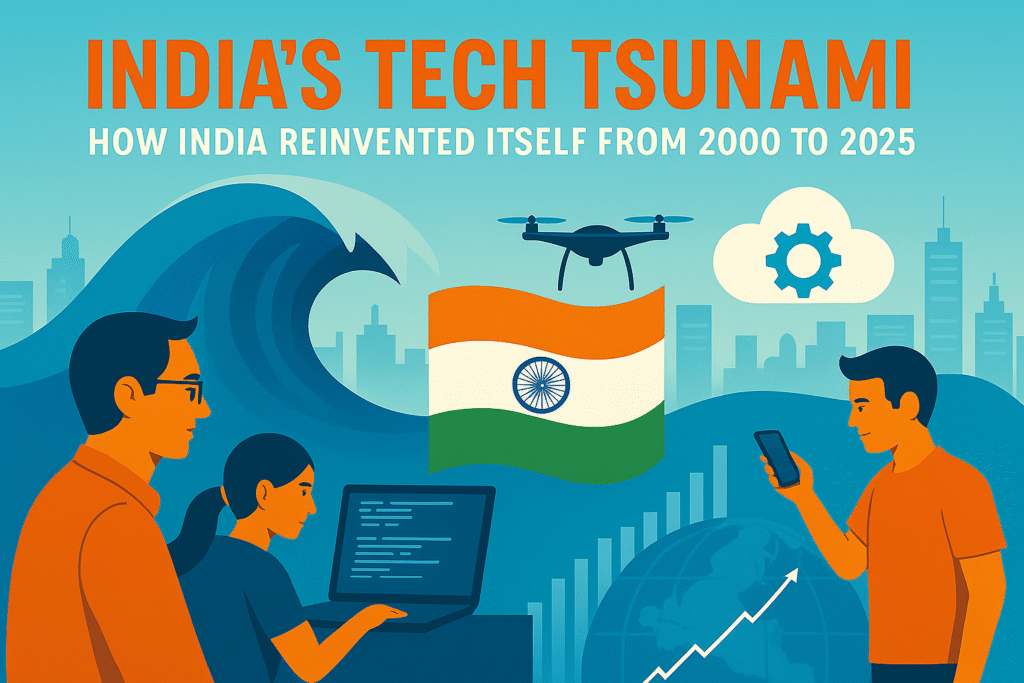
“India must pay its fair share. For too long, we’ve let countries like India flood our markets with no consequences. That ends now.”
These were the words of former U.S. President Donald Trump as he launched his 2025 campaign comeback policy—”Reciprocal Tariffs.” By imposing a 26% tariff on Indian imports, Trump is reigniting an old debate with fresh consequences. But what does this really mean for India’s economy, its exporters, and its global trade ambitions?
In this deep-dive, we dissect the implications of Trump’s move on Indian industries, identify which sectors will suffer or survive, and explore how India can turn adversity into strategy.
A Trade War Rekindled: Why Now?
The idea of “reciprocal tariffs” isn’t new. It’s vintage Trump—a strategy rooted in his belief that America has been exploited by unfair trade practices, particularly by countries that maintain higher tariffs against U.S. goods. In his second bid for presidency, Trump has doubled down.
India, which maintains an average tariff rate of 17.6% (according to WTO), has historically been on the radar of the U.S. for its protectionist trade stance. While India argues that these tariffs protect small businesses and farmers, the U.S. sees them as barriers.
Now, with a trade deficit of nearly $45 billion with India in 2024, the Trump campaign has chosen to act. The result: a sweeping 26% tariff on all Indian goods entering the U.S.—a market that accounted for over $77 billion in Indian exports last year.
The Hardest Hit: Which Indian Industries Will Bleed?
1. Electronics & Engineering Goods
India’s electronics exports to the U.S. are worth around $14 billion, including smartphones, circuit boards, and components. These are price-sensitive products. A 26% tariff would immediately make them uncompetitive against Chinese, South Korean, or Vietnamese alternatives.
2. Gems and Jewellery
India exported over $9 billion in gems and jewellery to the U.S. in 2024. With margins already thin, a 26% tariff could collapse demand overnight. Surat’s diamond cutting industry, employing over 800,000 workers, could see mass layoffs.
3. Auto Components
The U.S. is a significant buyer of Indian-made auto components, from brake parts to gearboxes. A hike in tariffs will hurt MSMEs that form the backbone of this sector in Pune, Chennai, and Gurugram.
4. Apparel and Footwear
While not as severely impacted as electronics, the textile and footwear sectors are vulnerable due to their labor-intensive nature and low-margin exports.
Relatively Insulated: Sectors That Might Survive
1. Pharmaceuticals
Indian pharma exports to the U.S. exceeded $7 billion in 2024. The good news? This sector was reportedly spared from the 26% tariff. Due to America’s dependence on Indian generics, especially post-COVID, imposing high tariffs would disrupt U.S. healthcare.
2. IT Services
Software exports and consulting services, which constitute over $60 billion in exports annually to the U.S., are not goods-based and thus remain largely unaffected. However, immigration restrictions could still be a lurking threat.
3. Agricultural Products
Select items like basmati rice and spices have niche markets in the U.S. Though the tariffs apply, brand loyalty and diaspora-driven demand might help absorb the cost hike to an extent.
Can India Benefit From This Trade Shock?
While the tariffs are clearly a blow, India could leverage this crisis in several ways:
1. Push for Self-Reliance & Value Addition
Make in India 2.0 could see renewed momentum. The blow to exports might force Indian companies to innovate, move up the value chain, and strengthen domestic demand.
2. Market Diversification
India already trades extensively with the EU, ASEAN, and the Middle East. A focused policy shift could reduce dependence on the U.S. and cushion long-term volatility.
3. Negotiation Leverage
The U.S. remains dependent on India for key inputs—IT, pharmaceuticals, critical minerals. This gives India bargaining chips in future bilateral trade talks.
Macro Impact: How Will This Affect India’s Economy?
- Trade Deficit Could Narrow: Ironically, India’s import bill from the U.S. may also decline, narrowing the trade gap, but not without hurting consumers.
- Job Losses in Export Sectors: An estimated 1.2 million jobs across textiles, gems, and engineering sectors are at risk.
- Pressure on INR and Markets: Reduced dollar inflows from exports could weaken the rupee and trigger volatility in equity markets.
- Inflation Risk: India may have to import costlier components from non-U.S. suppliers, raising costs for domestic manufacturers.
A Diplomatic Gamble: What Can India Do Now?
- Challenge at WTO: India can argue the tariffs violate MFN (Most Favored Nation) principles. But legal battles take years.
- Retaliatory Tariffs? Risky. India tried this in 2019 during the earlier GSP withdrawal and gained little.
- Bilateral Diplomacy: India must proactively engage not just the U.S. government but also American industries who rely on Indian supply chains.
- Strategic Alliances: Use forums like QUAD or IPEF to build counterweights to unilateral tariff aggression.
Final Word: Not Just an Economic War, But a Wake-Up Call
Trump’s tariff war is not just about economics—it’s about reshaping geopolitical alignments through economic coercion. For India, the message is clear: diversify, negotiate, and innovate. The U.S. will remain an indispensable partner, but not an infallible one.
In this test of economic resilience, India’s response will define its global trade identity for decades to come.


